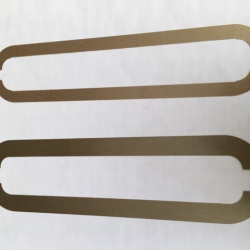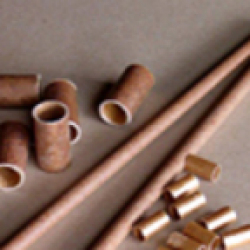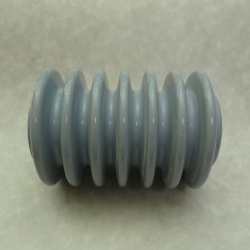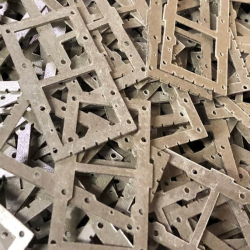Mica & Ceramics for Wind Power
For many years the Asheville Mica Company has been supplying mica electrical insulation parts in the form of washers, bushings and nichrome wire support structures for high wattage electrical energy dissipation units. We also supply heavy duty ceramic structural cores for high power load bank dissipation units such as ceramics for wind turbines and the ceramic and polymer standoff insulators to support the dissipating structures in metal housings. While the bulk of these load bank units were originally used to assist in braking diesel motor/ generator/electric powered locomotives and large mining trucks, similar kilo watt sized dissipating units are now being employed in several alternative energy applications. Contact us to learn more about our heavy duty ceramics for wind turbines and polymer standoff insulators!
Solar
Using the suns energy to generate electricity is a well proven technology and resistors can help to improve these systems. During large scale installations, the solar panels are often subjected to prolonged open circuit conditions which ultimately degrade the panel’s ability to generate electricity. Resistive loads can be deployed temporarily during construction whereby open circuit conditions are avoided. This helps preserve a panel’s output capacity and minimizes any warranty related issues. When the no load output voltage of a solar cell array is greater than the associated inverter that connects the panels to the power grid, it may be necessary to lower the voltage by applying a momentary load. Just as the array is to be put on line, a braking module connects a load resistor across the array until the output voltage reaches an acceptable level before enabling the inverter while simultaneously, disabling the braking module and load resistor.
Additionally, solar panels that rotate and follow the sun to ensure optimum efficiency will often use variable frequency drives to control the positioning. Braking modules and resistors will ensure that the panels stop with precision.
After the solar panels produce the electricity from the sun’s rays, it must be converted from DC to AC so that it can be used by your facility and/or distributed by the utility. This requires an inverter. During this process, harmonics are produced making the electricity “dirty or contaminated”. Harmonic filters are used to clean the electricity before it goes out to the utility line and are often required by the utility. Harmonic filter resistors are a part of the harmonic filter system that achieves this. With the addition of supplemental power sources, the need for ground fault protection has become even more important. The use of a high resistance ground system, this ensures the protection your facility will need.
Wind
Modern, large scale wind turbines are very efficient at converting wind energy into electricity and often produce up to 2MW. However, with a larger scale comes more challenges from high winds and overspeed conditions. If the wind speeds become too great, the wind turbine could spin out of control. In turn, the wind turbine generates more electricity than the grid or batteries can handle. The grid is a finite element, with a finite capacity. However, it has to accommodate a wide swing of current draws. For wind turbines charging batteries, the same effect occurs. Batteries have a finite capacity, yet they have to accommodate wide swings in current draws. Stabilizing the power output of windmills to match the current draw is done using load resistors. A load resistor dissipates the excess electricity. Usually, a charge controller or voltage regulator is used to determine how much power is diverted to the load resistor. For a battery charging system, the load resistor is used to prevent overcharging the batteries.
Wind energy use brings problems of voltage fluctuation and harmonic distortion. One of the sources to these distortions is the AC-DC-AC full size converters. Harmonic filters reduce the total harmonic distortion (THD) and enhance the power quality. Wind Turbines must be facing into the wind for optimum wind energy generation. Small turbines are pointed by a simple wind vane, while large turbines generally use a wind sensor coupled with a servo motor. The use of electric drives for their positioning system is often used. The drives use braking resistors to ensure that the turbines stop where required.
With the addition of supplemental power sources, the need for ground fault protection has become even more important. The use of high resistance ground system ensures the protection that your facility will need.
View Products

Mica Plate Composites
Mica splitting with varnished glass adds toughness and strength to the plate. Excellent for applications such as slot lining or coils wraps.
View Product
Mica Tube
Tubes can be furnished in standard length of 36" or cut to a pre-determined length.
View Product
Ceramics
Asheville Mica Company offers capabilities to provide custom ceramic insulation parts from non-mica insulation.
View Product
Fabricated Mica Parts
Our industry-leading fabrication capabilities consistently produce quality products on time and within budget.
View Product






















